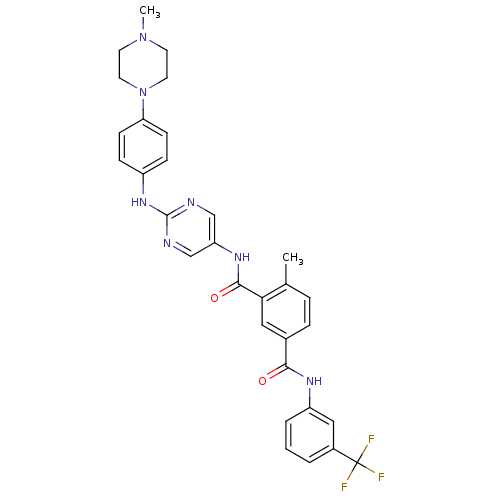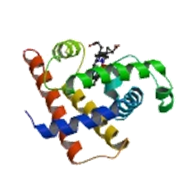Affinity DataIC50: 0.5nMpH: 7.5 T: 2°CAssay Description:The assay involves the phosphorylation of a biotinylated substrate and the detection of this phosphorylation after the addition of a streptavidin-all...More data for this Ligand-Target Pair
Affinity DataIC50: 5nMAssay Description:The assay involves the phosphorylation of a biotinylated substrate and the detection of this phosphorylation after the addition of a streptavidin-all...More data for this Ligand-Target Pair
Affinity DataIC50: 10nMAssay Description:In vitro kinase assays were done to establish IC50 values against recombinant enzymes using homogeneous time-resolved fluorescence (HTRF) assay. For ...More data for this Ligand-Target Pair
Affinity DataIC50: 123nMAssay Description:The assay involves the phosphorylation of a biotinylated substrate and the detection of this phosphorylation after the addition of a streptavidin-all...More data for this Ligand-Target Pair
Affinity DataIC50: 438nMAssay Description:The assay involves the phosphorylation of a biotinylated substrate and the detection of this phosphorylation after the addition of a streptavidin-all...More data for this Ligand-Target Pair


 3D Structure (crystal)
3D Structure (crystal)